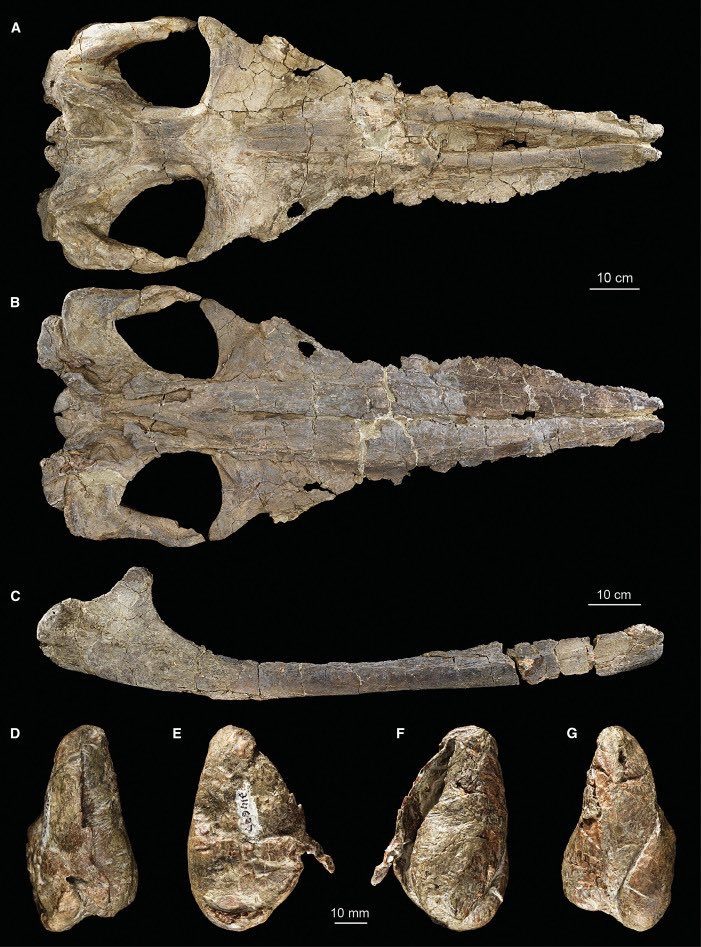Texas A&M Galveston Professor Part Of Team To Name New Transitional Whale Species
A newly named fossil whale, Maiabalaena nesbittae, provides information regarding the evolution of baleen in filter feeding mysticete whales. The findings were published today in the journal Current Biology.
For some time it’s been known that the ancestors to mysticete whales had teeth, but what hasn’t been clear is how the transition from feeding with teeth to filter feeding with baleen took place. While there have been several competing theories, such as whales filtering with teeth, whales having teeth and baleen at the same time, this new discovery points in a different direction entirely. Maiabalaena nesbittae appears to have been in a stage of evolution between teeth and baleen, with neither present, the research team believes.
The description of the new whale species was led by Carlos Peredo, a doctoral student at George Mason University, and co-authored with Dr. Christopher Marshall, a professor in the Department of Marine Biology at Texas A&M University at Galveston, Dr. Nicholas Pyenson, curator of fossil marine mammals at the Smithsonian National Museum of Natural History Department of Paleobiology, and Dr. Mark Uhen of George Mason University.
Whales are divided into toothed whales (odontocetes) that chase and capture their prey with their teeth and baleen whales (mysticetes) that strain or filter the water to capture smaller prey such as plankton and krill. Baleen is a unique feature among animals. It is made of keratin, the same material as your fingernails. Baleen plates have hair-like fringes on one side. When hundreds of plates are stack together they form a filter.
This new whale species, Maiabalaena, shows that early mysticetes experienced tooth loss prior to evolving baleen. The next obvious question is, “How did it feed?” The answer can be found among living whales that have few functional teeth and use suction to feed. In fact, suction is an ancestral feeding strategy for most marine vertebrates (animals with backbones, like fish). In fact, Maiabalaena has many anatomical aspects that support a suction feeding strategy.
Marshall and Peredo began a dialogue about the whale’s unique bone structure, anatomical features and how they thought it must have fed. “So it turned out to be a natural collaboration between Nick, Carlos, Mark and myself,” said Marshall. “It just developed that semester I was there. I’ve been going back ever since and now am a research associate with the Smithsonian.”
The collaboration began during Marshall’s faculty development leave where he spent time in Pyenson’s laboratory at the National Museum of Natural history. Paleobiologist Carlos Peredo, a graduate student of Dr. Uhen of George Mason University and Pyenson, had been working on a fossilized cetacean (whale) skull that had never been described before.
“This discovery is a big deal for us,” said Marshall. “It’s filled an important gap in understanding the evolution of baleen and filter feeding. Understanding the pattern of how baleen evolved in mysticetes is as important as other major evolutionary transformations such as scales to feathers in birds. Such anatomical transformations fundamentally altered the natural history of baleen whales.”
Patrick Temperilli, (409) 740-4783, temperilli@tamug.edu.






